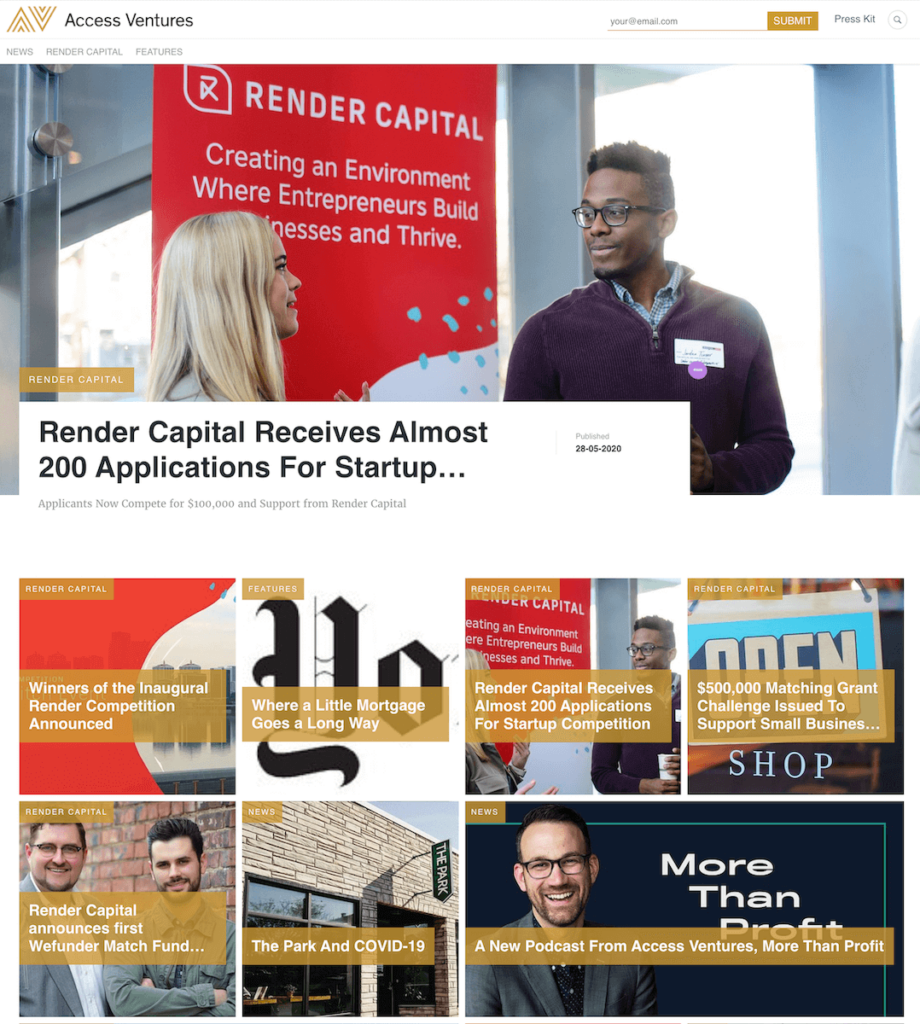Many business owners assume that their human resource (HR) and public relations (PR) departments couldn’t be more different, but that’s far from the truth. While HR deals with personnel and PR projects the image of a company, both departments are used by an organization to maximize returns on investments. In a sense, PR can attract better hires.
When it comes to HR, public relations is an important skill to master. Take one look at the job requirements for senior human resource specialists, and you’ll almost always see something related to PR. After all, you need to be good with people to be influential in both positions.
With that in mind, let’s take a look at how someone with human resource experience could benefit from a PR team or extra education in the public relations sphere, and why PR should be included in an employer branding strategy.
- How can HR and PR work together to build your employer brand
- Building your employer brand strategy with PR
- How to promote your employer brand
How can HR and PR work together to build your employer brand
80% of business leaders believe employer branding has a significant impact on their ability to recruit. However, most public relations efforts go towards media relations management, and typically focus on product and company news, financial reports, vision, or innovation.
There’s nothing wrong with your PR team placing focus on these areas, but job candidates need more information about the company’s inner workings. Instead of “happy washing” your employer brand, use a balanced perspective that focuses on credibility.
HR and PR as credible activists
Along with similar skill sets, job duties, and traits, HR and PR professionals are valuable, credible activists. Both occupations are expected to show genuine interest in others, earn the trust of their stakeholders, and frame complex ideas simply. HR and PR managers are expected to persist through difficult circumstances and deliver long-lasting results.
HR and PR as effective communicators
Whereas HR knows how to shape a message, PR knows when to deliver it. A PR-minded HR manager has to consider their audience, message timing, and the impact a message may have.
Public relations teams are capable of prioritizing communication-based on who receives the message. If a document is sent at the wrong time, it may get lost in the fray. At the same time, both departments can lessen the impact of bad news or ensure the desired outcome is achieved.
HR and PR’s impact on employee and candidate perception
Prospect employees make a snap decision on whether they’ll fit in with a company based on its culture. A bad reputation accompanied by poor leadership, dysfunctional teams, and questionable job security costs a company at least 10% more per hire. Even a 10% raise only tempts 28% of candidates to join the company over other employers with a better brand image.
It’s up to the HR and PR departments to communicate a great brand image through policy, programs, procedures, and special events. An HR manager with PR experience would:
- Manage the company’s website, social media, and job boards
- Respond to reviews, positive and negative, professionally
- Engage current employees to leave reviews and share job posts
A business could also use an online newsroom to share company news while boosting employer branding at the same time.

With both functions, new employees will stay engaged on and off the job search. Recruiters are the first point-of-contact for job candidates, and it’s important for them to maintain a positive company culture through every stage of the employee life cycle.
HR and PR create policies that influence employee happiness
Public relations can only do so much to smooth over bad company culture. Eventually, worthy candidates will steer away from a company if their internal policies don’t match the image they’re trying to convey. A company can utilize its HR department to create, implement and enforce policies that fit their values, which inevitably makes happy employees.
An HR-created employee handbook should state clear expectations for staff members and include policies that encourage trust, accountability, and efficiency. To keep employment documents legally compliant, a PR specialist will work with labor attorneys and the marketing team before signing off on any official documents.

Building your employer brand strategy with PR
Human resource and public relations teams work well together to maintain an employer’s brand, but can they help you create one from the group up? With the help of lawyers, marketers, and the CEO’s vision, HR and PR specialists can bring a vision to life.
Since an employer brand is a framework for defining, communicating, and maintaining your relationships with employees, prospective or otherwise, HR can help greatly here. Human resources manage employee relationships when they’re in the door, while PR builds interest for new eyes. Together, both occupations can establish a brand that says:
- Who you are and what you do
- What kind of people fit into your workplace
- What it’s like to work in your company
- What each worker receives when they choose you
Attracting and retaining the right talent relies on your public image and the effort you put in to uphold it. Unfortunately, great talent is hard to find, and competition is fierce. To stay competitive, a fantastic employer brand is necessary, not voluntary.
A great employer brand pays for itself
A study conducted by McKinsey found that superior talent is 400% more productive than average employees. In highly complex occupations, like software development, high performers are 800% more productive.
There’s a misnomer in business that more lower-paying workers equal higher efficiency and more profits, but the McKinsey study determined that isn’t the case.
With employer branding, you can also achieve the following:
- Lower cost per hire
- Faster hire times
- Lower turnover rates
- Savings on salaries
- More visibility
- More trust
While that sounds great, the current job market doesn’t take advantage of employer branding…
At the same time, employers aren’t confident in their tactics
To get the most value out of your workers, you need to attract the creme of the crop. Unfortunately, that same McKinsey study found that 82% of companies don’t think they recruit high-quality people, and only 7% think they can keep them.
Only 23% of managers and senior executives who feel they’re knowledgeable on this topic think their acquisition and retention strategies work. On top of that, a related survey found that 73% of employees are thinking about finding another job, and 43% are more likely to consider a new job only a year after they’re hired. As Boomers start to retire, many companies are worried about the future.
Despite employers shifting the blame to workers, it’s not their fault
Gen X, Z, and Millennials aren’t all to blame, says a Weber Shandwick/KRC Research survey conducted in 2017. Only 19% of employees globally report their experience at work matches their organization’s employer brand. When employees feel out-of-touch with their place of employment, they’re more likely to perform worse on the job and complain to outsiders.
While not living up to the promise of competitive wages, career advancements, and equal opportunities are all common reasons why employees leave their jobs, a negative reputation accounts for 49% of why at-risk workers run for the door. Workers want to work for trusted brands.
Employer brand strategies need to strengthen the employee relationship
Let’s bring it back around to the PR and HR dream team because they’re going to be essential to any employer brand strategy. Employees who believe in your brand will want to live it, and through the correct administration of policies, they’ll live it willingly. Your employees will become brand ambassadors who reinforce your message, which is pretty similar to what your PR is striving for.
Consistency is vital in employer branding, and HR can ensure that your employees are aware of these changes in a pleasant, approachable way. You need to create a solid employer brand that rarely contradicts itself, or morale, reputation, and funds will be lost as a result.
How to review and plan an employer branding strategy
According to the Institute for Public Relations, businesses should include the following in their planning stage:
- Step 1: Communicate ethics through historical anecdotes and employee testimonials.
- Step 2: Review core values and look for inconsistencies in the reward systems and policies.
- Step 3: Take a look at orientation and recruitment material to ensure it aligns with your values.
- Step 4: Evaluate existing ethics programs and add resources if necessary.
- Step 5: Conduct anonymous surveys on employee satisfaction rate and core value retention.
- Step 6: Reward employees who follow these rules with public recognition and monetary prizes.
Keep in mind that employer branding focuses on the total approach to the employee experience and not colors, catchphrases, or fonts. While those aspects of your brand are important, they aren’t necessarily crucial for employer branding. However, some agencies will add a slogan to their employer brand to further drive home its purpose.
How to promote your employer brand
Creating an employer brand can often be expensive and time-consuming, but you can promote your employer brand in many low-cost ways. Let’s take a look at how you can use members of your human resources and public relations teams to make your brand more visible. Create a demographic profile that suits your brand and target them directly.
- Research your competition and learn from their successes and mistakes.
- Understand where your company management style can improve.
- Use photos of your team members to humanize your brand.
- Summarize your best HR practices and list them in your communications program.
- Write success stories of your employees and use them in articles or posts.
- Promote a good work-life balance by offering outstanding benefits packages.
- Participate in workshops, exhibitions, and displays.
- Ask your employees to leave reviews on websites that revolve around workplace satisfaction and job search.
- Track KPIs and metrics for your brand and use them in your PR & marketing efforts.
Remember that the promotion of your brand is a long-term process. It’s unwise to abandon aspects of your employer brand later on, as many of your current clients or buyers will associate you with that image. However, that doesn’t mean you should never change your employer branding as trends, consumer needs, and marketing expectations alter with the times.
Final thoughts
Employer branding is a worthwhile acquisition as long as you remain consistent. A great employer brand will improve your retention rates, job application rates, and the amount of quality talent at your agency the more you promote it. Through social media, company website, and online newsroom, your business will become the top choice for employment.
Cover photo by Patrik Michalicka

